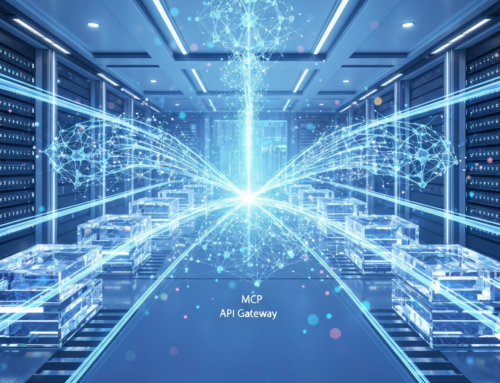The Enterprise Reality Check: What We Learned After One year of agentic AI
The dawn of agentic AI promised a revolution, a world where autonomous digital workers handled complex, multi-step tasks with minimal human intervention. Following the initial euphoria, the commercial world has completed its first full cycle of implementation. The true measure of this technology is now clear, and the findings from our experience deploying these sophisticated systems confirm a crucial reality: successfully navigating the first One year of agentic AI requires a shift in mindset from simply adopting a tool to orchestrating a complete workflow transformation.
Agentic AI, which differentiates itself from simple generative AI by its ability to plan, execute, and iterate on a defined goal using various tools and APIs, has moved from the laboratory to the production environment. While the productivity potential remains unmatched, the successful enterprises are the ones who focused less on the ‘agent’ and more on the ‘system’—ensuring rigor in evaluation, observability, and strategic alignment with core business processes.
Shifting Focus: Why Workflow Transformation Trumps Agent Obsession
A common pitfall we observed in early enterprise implementations was a singular focus on the AI agent’s capabilities rather than the entire end-to-end process it was designed to improve. This is the Real-World Lesson overlooked by many: The true ROI of agentic AI is not in the agent itself, but in the radical transformation of the surrounding workflow.
An autonomous agent performing a task in isolation often creates bottlenecks when it hands off its output to a human team or downstream system. For a deployment to yield significant business value, companies must redesign the workflow to:
- Eliminate Unnecessary Steps: Analyze the human workflow and remove steps that the agent makes redundant.
- Build Seamless Handoffs: Ensure the agent’s output is structured and verified for immediate consumption by the next step, whether human or automated.
- Redefine Human Roles: Shift human focus from execution to supervision, verification, and exception handling.
This strategic approach to process re-engineering—a core component of our comprehensive business services—is what turns a novel AI experiment into a scalable asset, delivering tangible gains in efficiency and operational throughput.
Determining Fit: When to Choose AI Agents vs. Rules-Based Business Automation
One of the most critical strategic decisions business leaders face is determining which automation technology is appropriate for a given task. This is the Expert Insight to Add for Authority: The choice between an agentic AI system and traditional rules-based automation must be a deliberate strategic decision based on task variability, not just technological excitement.
Rules-based business automation, utilizing platforms like n8n or Python scripts to connect APIs and execute deterministic logic, remains the superior choice for high-volume, low-variability tasks. These include:
- Data entry and synchronization between CRM and ERP systems.
- Standard invoice processing and reconciliation.
- Triggered notifications and structured data transfers.
However, agentic AI excels where the task is complex, non-linear, and requires reasoning, planning, and tool use—tasks that were previously only possible for human knowledge workers. For example:
- Customer support tickets requiring nuanced interpretation and multi-system resolution.
- Automated market research and synthesis across unstructured data sources.
- Multi-step lead qualification and personalized email outreach generation.
For operations like e-commerce solutions and logistics, where transaction volume is high but the flow is predictable, rules-based systems offer reliability and cost-efficiency. Agentic systems, conversely, deliver value in the “long-tail” of unique, complex customer issues or novel research requirements.
The Agentic-Fit Decision Matrix
| Characteristic | Rules-Based Automation | Agentic AI |
|---|---|---|
| Task Complexity | Low to Moderate (Deterministic) | High (Non-deterministic, planning required) |
| Data Input | Structured, predictable formats | Unstructured text, images, diverse inputs |
| Failure Tolerance | Near zero (mission-critical) | Moderate (human oversight for exceptions) |
| Cost Driver | Development/Maintenance of connectors | LLM inference, compute, and evaluation loops |
Combating ‘AI Slop’: The Strategic Imperative of Agent Evaluation and Trust Building
A primary challenge encountered after the first year of deployment is the phenomenon of “AI Slop”—the generation of plausible but factually incorrect, off-brand, or otherwise unusable output from autonomous agents. This erosion of quality undermines the very purpose of automation and highlights a fundamental truth: autonomy without rigorous verification is a business risk.
Building trust in an agentic workflow requires a shift from relying solely on the agent’s internal confidence scores to implementing external, verifiable quality gates:
1. Input Validation and Guardrails: Pre-filtering prompts and data to ensure they adhere to compliance rules and brand standards. For tasks involving brand identity, such as generating content or making purchasing decisions, integrating checkpoints to review against core guidelines, like established logo design and branding standards, is essential.
2. Multi-Step Verification: Instead of letting the agent run wild, enforce specific review steps, particularly for high-stakes tasks. This can involve an independent model or a human expert verifying the critical steps of the agent’s plan and final output.
3. Human-in-the-Loop Design: Design workflows where agents handle the heavy lifting (80% of the work) but flag the most complex or uncertain cases for human review. This is not a failure of the agent; it is a successful implementation of a robust, trustworthy system.
Ensuring Scalability: Implementing Observability and Verification in AI Agent Workflows
As enterprises scale from a single proof-of-concept to dozens of critical agentic workflows, operational stability becomes paramount. The Unique Angle for a definitive guide on this topic is the absolute necessity of observability and verification, mirroring the continuous security and performance management required for robust digital infrastructure.
Just as a reliable web hosting infrastructure requires constant monitoring and maintenance, so too do autonomous AI agents. Observability tools allow business owners and IT teams to monitor the agent’s performance in real-time:
- Latency and Tool Usage: Tracking how quickly the agent completes its tasks and which external tools/APIs it uses most frequently.
- Failure and Recalculation Rate: Monitoring how often an agent’s initial plan fails and requires replanning, which is a key indicator of its reliability and prompt engineering quality.
- Cost Monitoring: Since LLM tokens have a cost, robust logging is necessary to track the actual consumption rate of the agent and calculate the true ROI per task completed.
Verification is the practical application of this data. It involves deploying shadow agents or A/B testing new prompts against old ones to ensure that updates do not introduce performance regressions or “AI Slop.” Without this operational rigor, enterprise agent deployment risks becoming a high-cost, unpredictable liability.
From Single Use to Strategic Asset: Building Reusable Custom AI Solutions and Components
A central tenet of modern software development is reusability. In the realm of agentic AI, the most significant long-term value is unlocked not through discrete, one-off agents, but through the creation of reusable, custom AI components.
These components are essentially specialized tools or micro-services—often powered by Python and FastAPI—that an agent can reliably call upon to perform a specific, validated function. For example, instead of asking a general-purpose agent to handle a database query or secure API call, a custom tool can be built to handle that function with pre-tested logic and security protocols. This approach offers several strategic advantages:
- Consistency: Ensures that critical business logic is executed identically across all agents and workflows.
- Efficiency: Avoids the high cost and latency of using a large LLM for simple, deterministic tasks.
- Security: Centralizes access control and token management, reducing the surface area for security risks.
Idea Forge Studios specializes in developing these custom AI solutions, designing and integrating robust backend components that serve as the foundational building blocks for scalable agentic workflows, moving clients beyond generic tools to proprietary, competitive automation.
The New Collaboration Model: Redesigning Work for Human and Intelligent Automation Synergy
As enterprises gain experience after One year of agentic AI, the focus has shifted from automation replacing jobs to automation transforming them. The most convincing evidence for credibility lies in the measurable success of enterprises that have redesigned work for human-AI collaboration. Case studies show that organizations leveraging intelligent automation for customer service saw significant reductions in average handling times and boosts in customer satisfaction, primarily by offloading repetitive, non-critical tasks to the agent.
This success is driven by adopting a new model of collaboration:
- Agent as First Responder: Agents handle initial triage, information gathering, and simple resolutions.
- Human as Editor and Escalation Point: Human employees receive pre-packaged cases, complete with the agent’s proposed plan, summary, and a confidence score. Their role becomes one of high-level problem-solving, empathy, and strategic decision-making.
- The Feedback Loop: Crucially, human actions and resolutions feed directly back into the agent’s training data and evaluation systems, creating a self-improving system where the agent continuously learns from human expertise.
This synergy is the future of intelligent enterprise, where the agent’s speed and consistency are combined with the human’s judgment and emotional intelligence.
The Path Forward: Mastering Agentic Workflows for Long-Term Business Value
The first year of agentic AI adoption has provided invaluable lessons. The future belongs not to those who merely deploy AI agents, but to those who master the art of One year of agentic AI workflow design. Success is defined by moving beyond simplistic task automation to:
- Prioritizing the holistic transformation of end-to-end business processes.
- Strategically differentiating between rules-based and agentic solutions.
- Instituting rigorous observability and verification to maintain quality and trust.
- Building a library of custom, reusable components for scalable, consistent operations.
For business owners and technical leaders, the key takeaway is that agentic AI is a powerful strategic lever, but one that demands a confident, professional, and authoritative approach to implementation. Partnering with experts who understand both high-level business strategy and the deep technical requirements of secure, scalable integration is no longer optional—it is the prerequisite for capturing long-term value.
Ready to Build Trustworthy, Scalable AI Workflows?
The key to ROI in agentic AI is rigorous workflow design and custom component building. Don’t let ‘AI Slop’ undermine your investment. Partner with Idea Forge Studios to define your strategic path forward.
Schedule Your Strategic Consultation
Or reach out directly: Call (980) 322-4500 or Email info@ideaforgestudios.com








Get Social